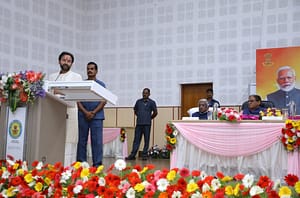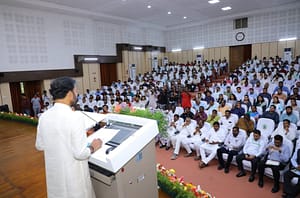Tata Motors, India’s largest commercial vehicle manufacturer, today flagged-off a fleet of electric buses dedicated for workforce transportation at its Pantnagar plant in Uttarakhand. These indigenously built, zero-emission buses are equipped with latest features, and powered by advanced battery systems. TML Smart City Mobility Solutions Limited (TSCMSL), a wholly owned subsidiary of Tata Motors, will facilitate this workforce commute with a modern fleet of Tata Ultra 9m electric buses.
Designed to provide a safe, comfortable and convenient commute, this e-bus service will reduce carbon footprint by providing clean and green transport to over 5,000 people and save ~1,100 tonnes of CO2 emissions annually. Electricity generated from a 16MW solar energy plant will charge the e-bus fleet, making the entire operation green from end-to-end.
Announcing the launch, Mr. Vishal Badshah, Vice President and Head – Operations, Tata Motors Commercial Vehicles, said, “The introduction of electric buses for workforce commuting marks a significant step forward towards fulfilling Tata Motors Commercial Vehicles’ aspiration of achieving net-zero greenhouse gas (GHG) emissions by 2045. We are committed to making all our manufacturing facilities green by integrating sustainability across their entire value chain – from sourcing to development and engineering to operations.
I am delighted to launch this initiative in Pantnagar first as it adds to and acknowledges the successes of the facility’s myriad of sustainability initiatives. This plant is already a certified Zero Waste to Landfill facility and has also received water-positive certification by CII-GBC. The launch of a zero emission, e-fleet service creates another major milestone in the sustainability journey of the plant.”
Powered by a full-electric drivetrain, Tata Ultra EV 9m electric bus is equipped with smart features including regenerative braking system and Intelligent Transport Systems. This deployment builds upon Tata Motors’ remarkable success in India’s electric mass mobility segment, where the company has already deployed over 3,100 electric buses across 10 cities. These buses have cumulatively covered more than 24 crore kilometres with an uptime of over 95%, demonstrating reliability and efficiency of Tata Motors’ electric mass mobility solutions.
















